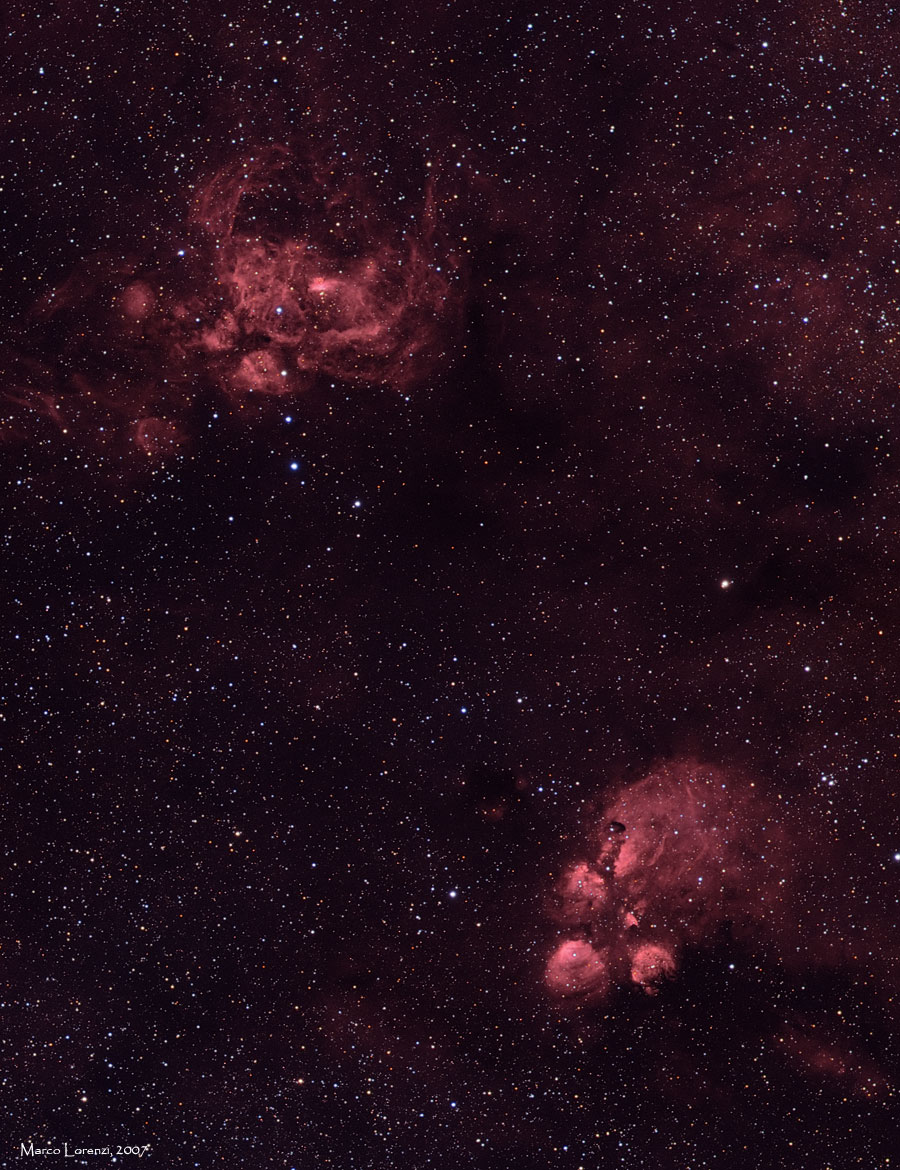
The Cat's Paw and Crab nebulas
Field centered on R.A. 17h 23' & Dec. -35° 00'

As soon
as we find out whose cat did this . . . Nebulae are as famous for being
identified with familiar shapes as perhaps cats are for getting into
trouble. No cat, though, could have created the vast Cat's Paw Nebula
visible in Scorpius. The Cat's Paw Nebula is the glowing red nebula
near the bottom of the above picture. At 5500 light years distant, Cat's
Paw is an emission nebula with a red color that originates from an abundance
of ionized hydrogen atoms. Alternatively known as the Bear Claw Nebula
or NGC 6334, stars nearly ten times the mass of our Sun have been born
there in only the past few million years. Click here for an enlargement (postcard style) at higher resolution. |
Instrument: |
CCD: |
Exposition: |
Filter: |
Site: |
Author: |
| Pentax SXD75 + Vixen Sphinx SXD | SBIG STL11K, binning 1x1, T=-20°C | Ha (60m) L (30m) RGB (15m each) | Optec HaLRGB filter set | Maleene station, Mt. Magnet, W.Australia |
M.Lorenzi |
All of the photographs and text on these pages are copyrighted by Marco Lorenzi.
They may not be reproduced, published, copied or transmitted
in any form, including electronically on the Internet or World Wide
Web, without written permission of the author. |